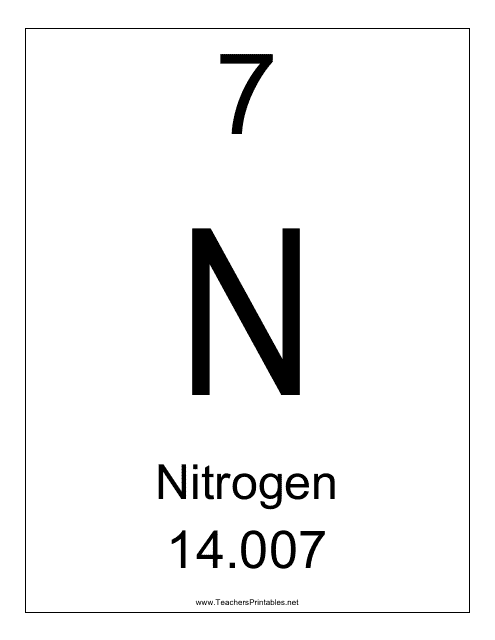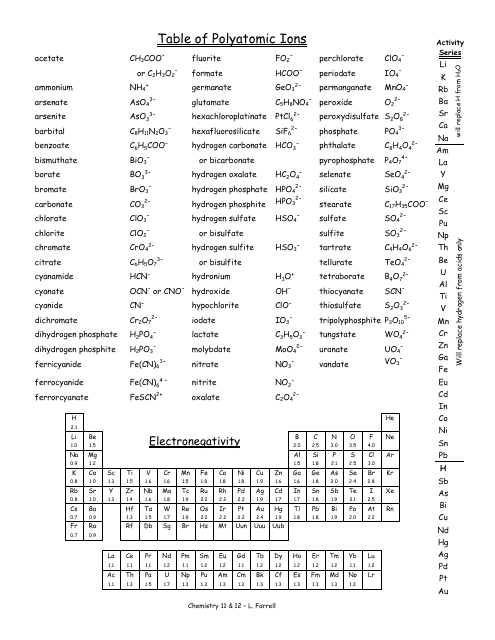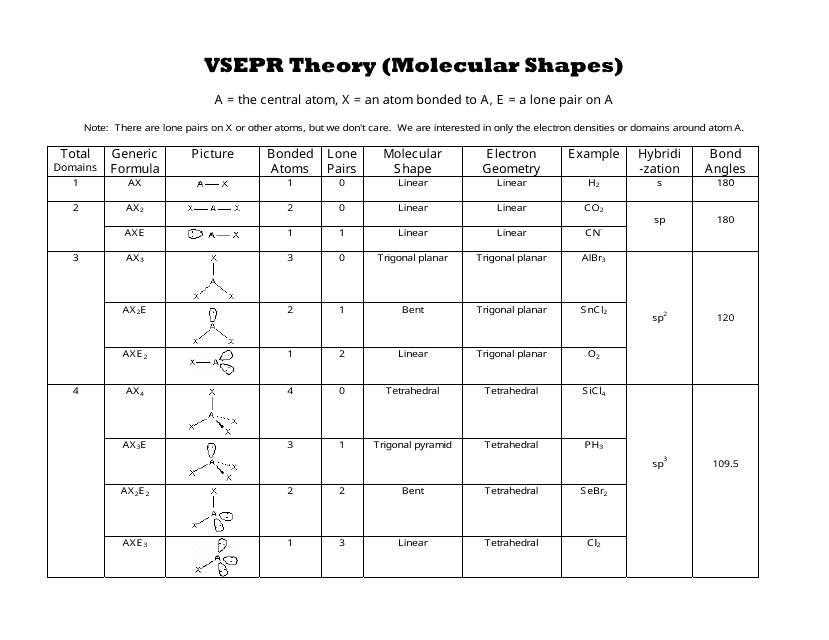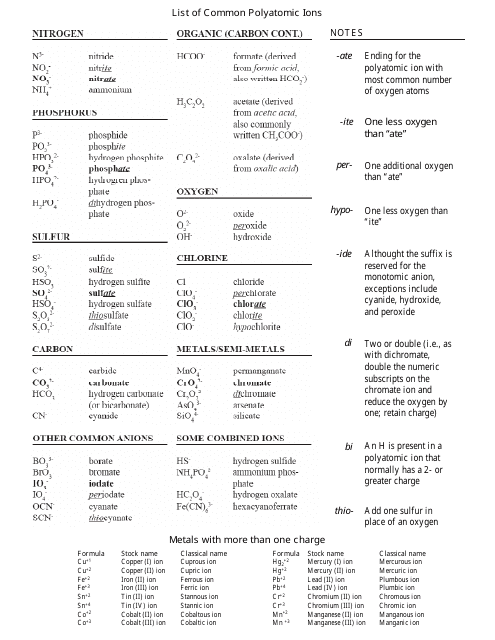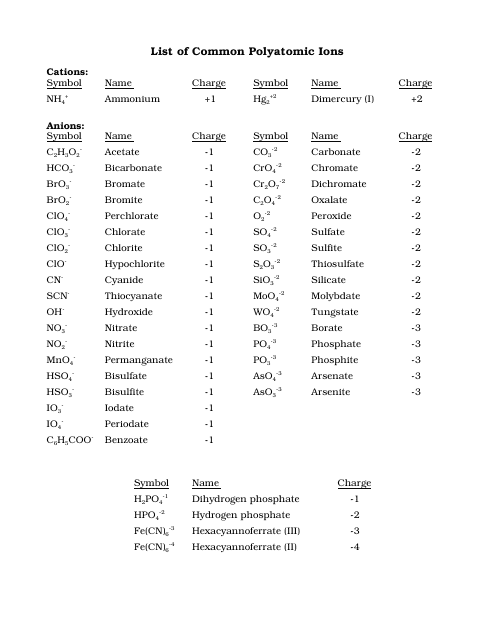Chemistry Charts
Chemistry charts are tools that provide visual representations of information related to chemical elements, compounds, reactions, and other important aspects of chemistry. They are used to organize and present information in a concise and easy-to-understand format. Chemistry charts may include information such as elements' atomic numbers, symbols, atomic weights, and other properties. They help students, researchers, and professionals in understanding and studying various chemical concepts, making predictions, and solving problems in the field of chemistry.
Documents:
28
This document provides a table of elements and their corresponding atomic weights. It is used to reference the atomic weights of different elements.
This document provides a chart that contains the symbol and basic information about the element nitrogen, which is represented by the symbol "N".
This document provides a template for creating a chemical poster related to cerium. Use this template to easily design and share information about the chemical properties, applications, and uses of cerium.
This document is a template for keeping a monthly record of your pool's maintenance and water quality. It helps you track and manage the pool's condition and schedule necessary maintenance tasks.
This post-lab activity sheet is designed to accompany a visit to the Tech Museum of Innovation, focusing on the periodic table of elements.
This document provides a chart of electron configurations for all the elements. It shows how electrons are arranged in the atoms of different elements.
This document provides a chart that shows the solubility of different ionic compounds.
This document provides a chart that contains a list of common polyatomic ions and their corresponding chemical formulas and charges. It is useful for studying and understanding the properties and behavior of these ions in chemical reactions.
This VSEPR Chart is widely known for helping students in understanding molecular geometry and is generally used during freshman-level Chemistry lessons.
This document provides a chart of common ions, including their names and charges. It is a useful reference for chemistry students and professionals.
This document provides a summary chart of the VSEPR (Valence Shell Electron Pair Repulsion) Theory, a model used to predict the shape of molecules based on the number of electron pairs around the central atom.
This document is a cheat sheet that provides a quick reference for net ionic equations and solubility rules. It helps you understand how to write net ionic equations and determine solubility of compounds in aqueous solutions.
This document provides a table of properties for common organic solvents, including their color.
This document provides a table of properties for commonly used organic solvents. It helps in understanding the characteristics and uses of different solvents.
This document provides a chart of common polyatomic ions and their formulas. It is used to help identify and remember the formulas of these ions.
This document provides a chart that lists the common polyatomic ions along with their chemical formulas and charges. It is a helpful reference for studying and understanding ions in chemistry.
This document provides a chart for common cations, anions, acids, salts, and hydrate nomenclature. It helps identify the names and formulas of different types of chemical compounds.
This document compares the weight of carbon monoxide gas to the weight of air. It provides a chart that shows the difference in weight between these two substances.
This document provides a chart listing common polyatomic ions, including cations and anions. It is a useful reference for understanding the charges and formulas of these ions.
This document presents a chart of the valences (or valencies) of different chemical elements. The chart indicates the number of bonds each element can form with other elements.
This document is a detailed and comprehensive version of the periodic table of elements, including all known elements and their various properties. It is often used by scientists and students for reference and research purposes.
This document features a chart that helps you carbonate beverages at the appropriate pressure based on the temperature.
This document provides a chart that shows the miscibility (ability to mix) of various solvents.
This document is a worksheet for the Amino Acids topic in the Chemistry 108b Lecture at the University of California.
This type of document is a flowchart that illustrates the relationships and processes involved in the field of matter chemistry.
This document provides a cheat sheet for the activity series of metals and non-metals.


